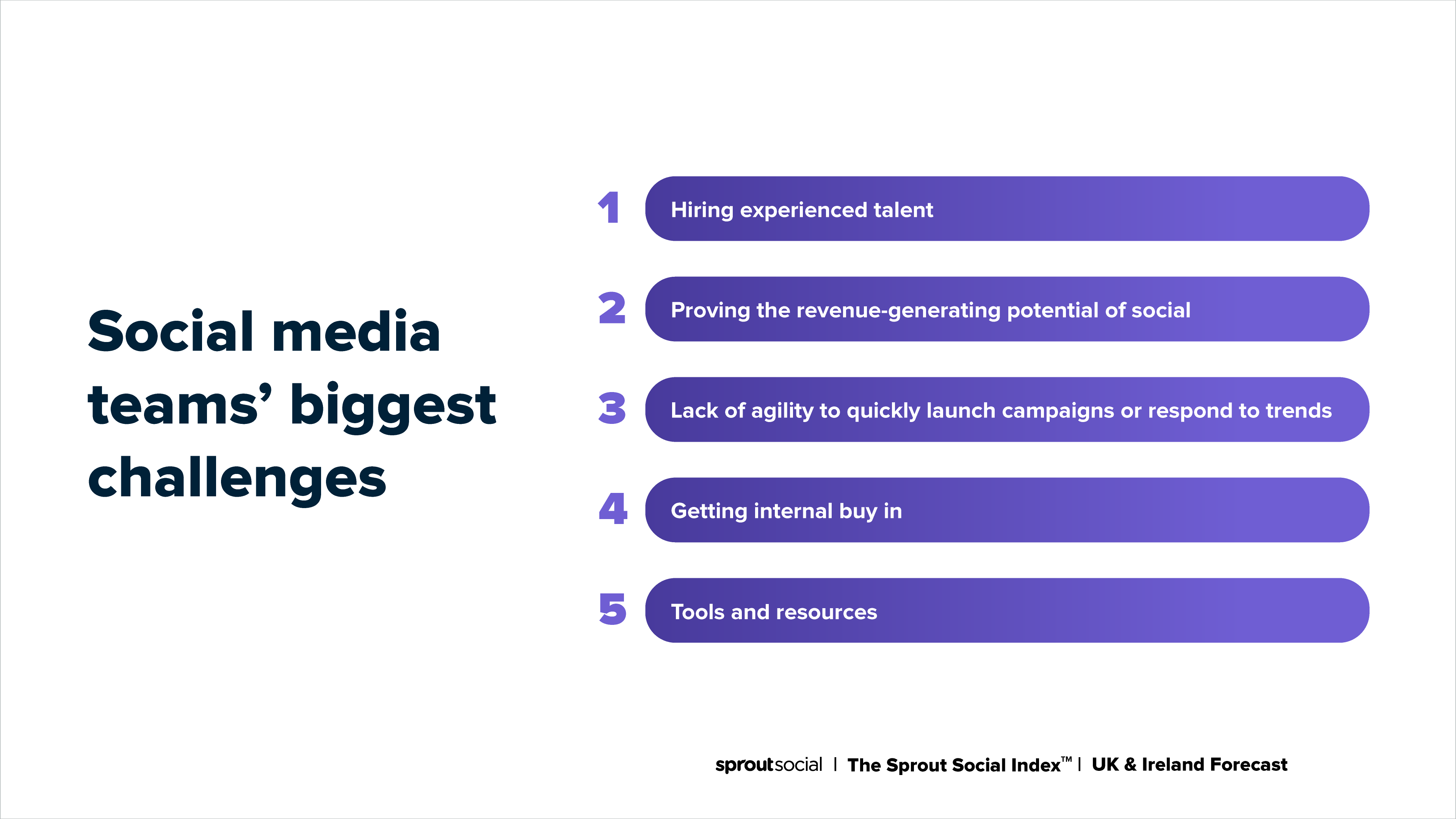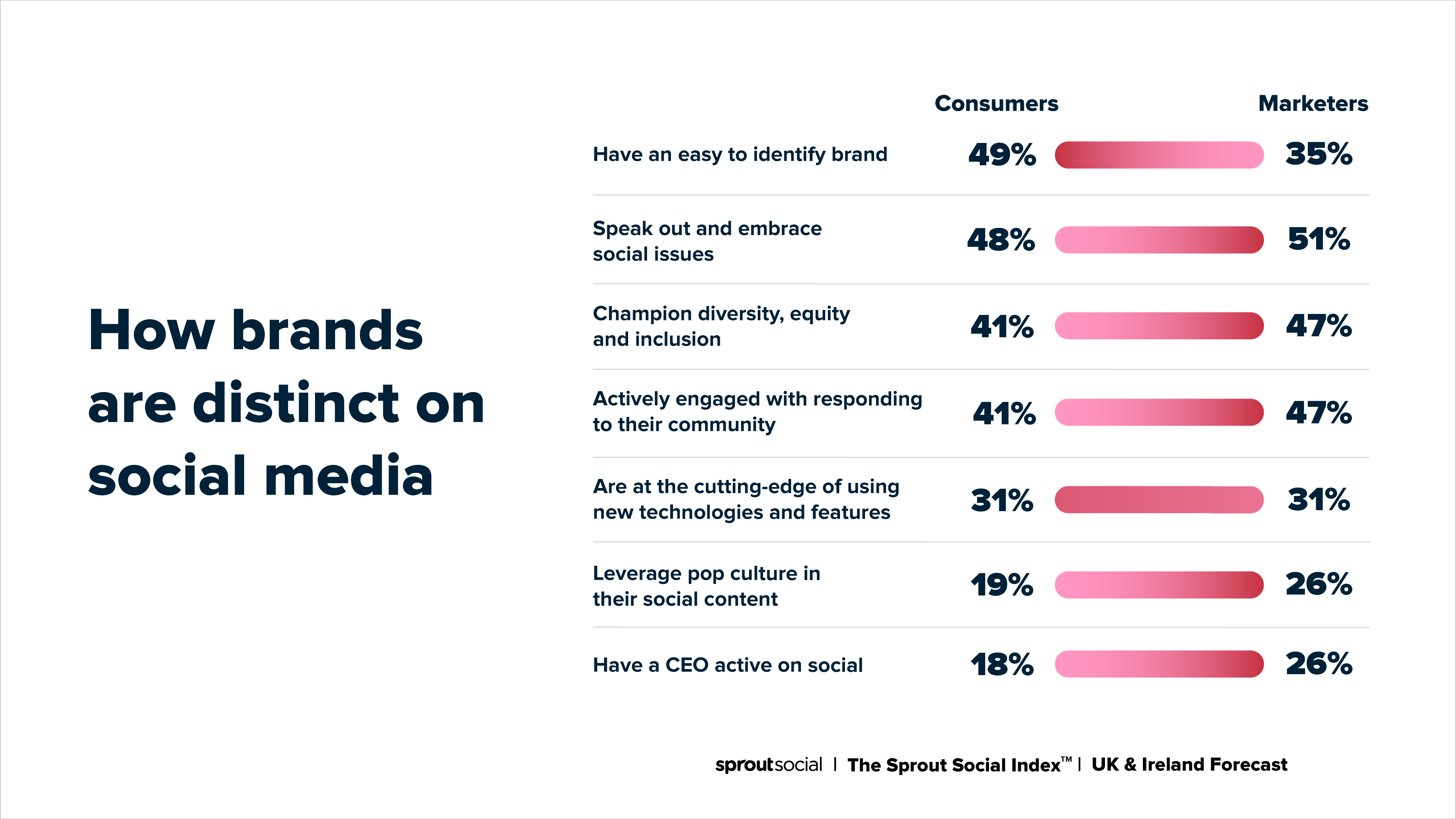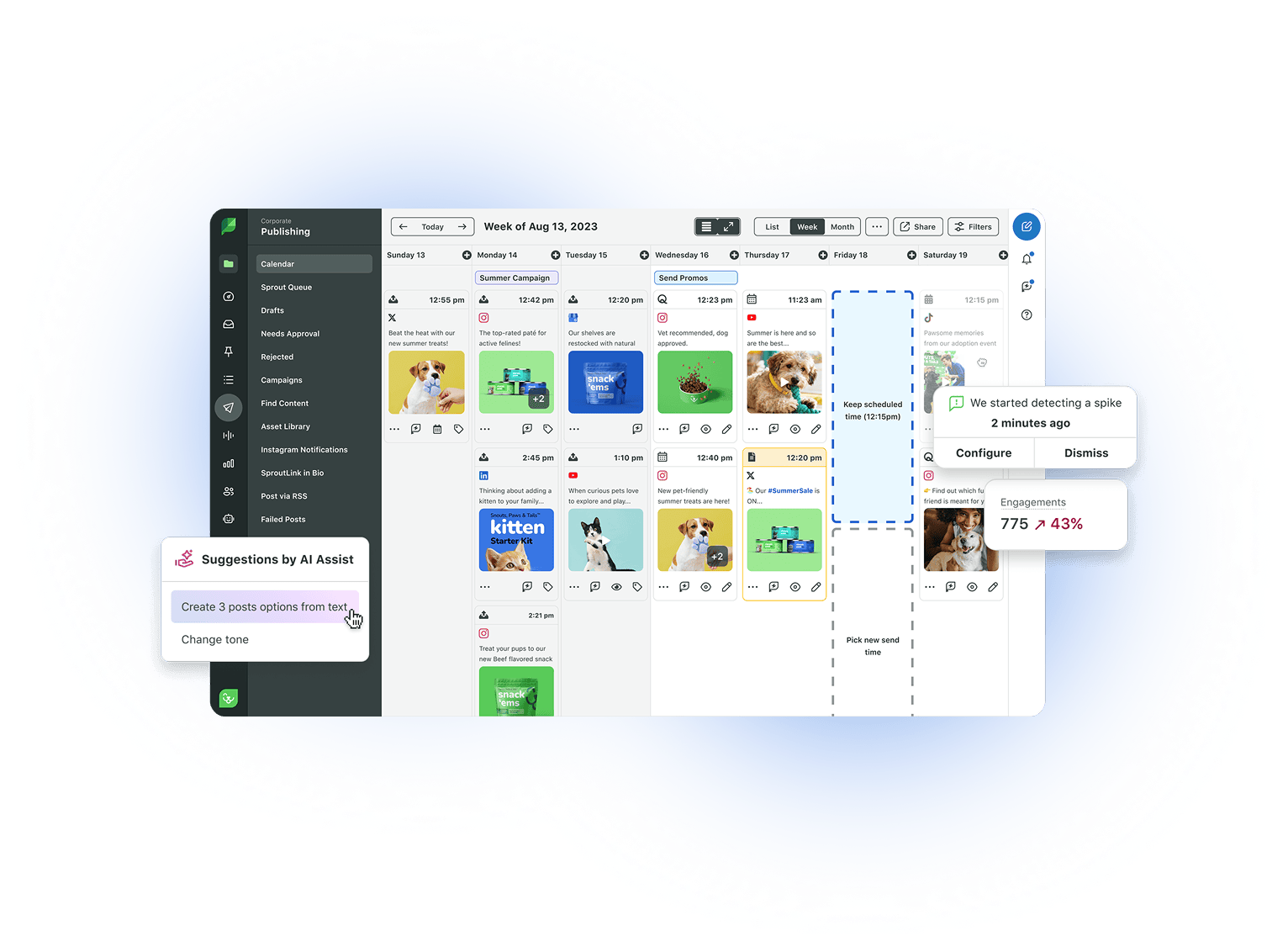The 2022 Sprout Social Index: Social Media Trends for the UK & Ireland
There’s a major opportunity on the table for British and Irish brands.
Consumers have enthusiastically embraced social media as a part of their everyday lives. They’ve spent the past few years testing the waters. Now, they’re building boats and setting sail. This rapid advancement in consumer social sophistication can be a game-changer for businesses—as long as they know how to keep up.
To help, we surveyed over 1,000 British and Irish consumers to better understand what they want from brands on social media. We also surveyed more than 500 British and Irish social marketers to see how their strategies align with those expectations.
…But they’re not so sure about emerging technologies
Being where your customers are is only half the battle. You also need to know what they want from you once you get there. British and Irish marketers are making big bets that this will involve virtual reality (VR), augmented reality (AR) and metaverse technology. Consumers aren’t so sure.
This disconnect is most evident in spending plans. More than two-thirds of marketers (67%) anticipate investing at least a quarter of their budgets into an AR/VR/metaverse social strategy over the next 12 months. However, only 39% of consumers anticipate these technologies will play a role in how they engage with brands over the next year.
While this does show a misalignment, it can also provide marketers with some much-needed stress relief. Rather than attempting to master emerging technologies, businesses should stay laser-focused on nailing social media basics. Whether that’s refining network strategies or lowering your time to first response, mastering the fundamentals can build loyalty with social-savvy consumers.
If there’s anything British and Irish marketers can’t afford to miss, it’s opportunities to build up customer loyalty. As it currently stands, businesses face swift consequences when they fail to meet consumer engagement expectations. Not responding in a timely fashion on social drives over a third (35%) of consumers to choose a competitor instead. The lesson here is clear: Just because someone follows you on social, doesn’t mean they’re faithful to your brand.
With the UK and Ireland’s accelerated use of social media, it’s evident that brands have had less time to build brand loyalty. Arguably, as a concept, brand loyalty is something that simply isn’t as ingrained in our culture as much as it is in the US. With that in mind, brands wishing to successfully engage with, retain and ultimately do business with UK and Irish consumers need to understand that expectations are high. The margins for error are slim, and the losses are potentially much greater for your brand.Gerard Murnaghan
Vice President & General Manager, EMEA, Sprout Social
Thankfully, social media response times largely line up with consumer expectations. As consumer social media usage continues to increase, marketers will have to stay on top of an increasing number of inbound messages. Perfecting an engagement strategy today can set businesses up for more loyal customers tomorrow.
A recognisable brand is the ultimate differentiator
Engagement isn’t the only way to foster customer loyalty. If you want to create stronger connections with your audience, brand building is the way to go.
Consumers rank having a recognisable brand as the most important factor in being distinct on social media. Marketers, however, place more importance on embracing social issues (51%), championing diversity, equity and inclusion (47%), and engaging with their community (47%).
That’s not to say that consumers don’t care if brands take a stand or not. Many simply expect it at this point. Most British and Irish consumers (81%) either agree or strongly agree that it’s important for brands to raise awareness and speak out on sensitive topics. It’s more important in the UK and Ireland than it is in the US, where only 71% of consumers feel the same.
So what goes into creating a recognisable brand? Ask Rich Myers. His Leeds-based bakery, Get Baked received a near-overwhelming amount of attention after it was reported to a local Trading Standards agency over the use illegal sprinkles. “Sprinklegate” quickly became a viral sensation, taking Get Baked’s Instagram following from 4,000 to 68,000.
While it was the controversy that initially attracted the new followers, Myer’s commitment to Get Baked’s unique brand is what turned them into fans. Even in the height of the sprinkles scandal, Myers stuck with the dry, genuine, snarky tone that the brand built its original presence on. This raw authenticity was enough to endear the Get Baked community through the crisis and beyond.
Consistent language and visuals can help consumers easily identify your accounts in their crowded feeds. Pair that with an emphasis on diversity, equity and inclusion, and marketers can start creating stronger connections with your audience at scale.










Social media data empowers marketers to keep up with consumers
As networks and preferences continue to evolve, one thing is clear. Social data is the most effective—if not only—way to proactively keep up with digital-first consumers.
These insights will prove vital as social commerce functionality continues to roll out across networks. The throughlines that connect likes, comments and social media chatter to real, measurable revenue are cementing. Understanding what your customers want from your content doesn’t just impact your social strategy. It will soon impact your bottom line as well.
The London-headquartered clothing retailer River Island is way ahead of the curve when it comes to using social data for real-time insights. Their team relies on Sprout Social to track some of their popular brand hashtags alongside keywords like, “love,” “need,” “want” and “buy” to better understand consumer purchase intent. This rich social data fuels both content decisions and overarching campaign strategy.
This deep analysis can’t be completed with a few one-and-done performance reports. Consumer social media sophistication is moving too quickly for things to be that simple. To stay ahead of the curve, British and Irish marketers need to embrace the new data-driven standards for proactive decision making: social listening and creative testing.
Combined, these tools can help marketers narrow in on the messaging, creative and distribution strategies that work best for their audience. These insights can be applied across channels, supporting the data-driven decisions that will bring British and Irish businesses into the new era of marketing.